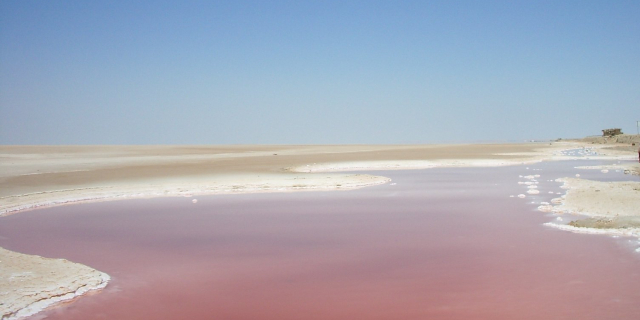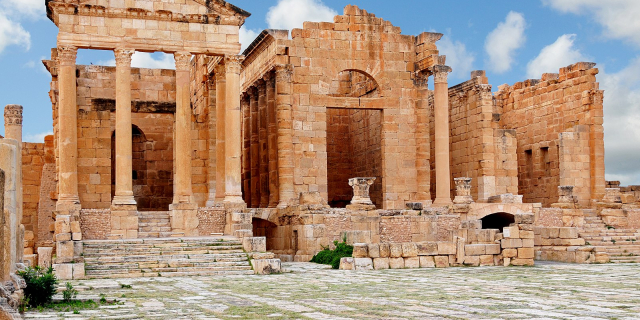Gabès (, UK also ; Arabic: قابس, romanized: ), also spelled Cabès, Cabes, Kabes, Gabbs and Gaps, is the capital city of the Gabès Governorate in Tunisia. It is located on the coast of the Gulf of Gabès. With a population of 152,921, Gabès is the 6th largest Tunisian city. Gabes is 327 km away from Tunis and 113 km away from Sfax.
Takapes, the ancient name of Gabès, is a Numidian (Berber) toponym. Later, the prefix "Ta" (meaning "to" in Berber) was dropped, and the place became known as Kapes. As in Arabic the sound /p/ is unknown, Kapes became known as Kabes, and later known as Gabès.
Roman periodGabès is the ancient Tacapae[1][2] or Tacape (Τακάπη in Ancient greek) or Tacapes[3] of the Roman province of Tripolitania.
Strabo refers to this city as an important entrepot of the Lesser Syrtis. Pliny (18.22) remarks that the waters of a copious fountain at Tacape were divided among the cultivators according to a system where each had the use of the water during a certain interval of time.
The Tabula Peutingeriana shows Tacape between Macomades and Sabratha.
BishopricTacapae became a Christian bishopric that, no longer being a residential see, is included in the Catholic Church's list of titular sees.[4]
Three of its bishops are known:[5]
Dulcitius, legate of the bishops of Tripolitana to the Council of Carthage (403) and present at the Conference of Carthage (411); Servilius, exiled by Huneric in 484; Caius or Gallus, legate of the bishops of his province to the Council of Carthage (525).After the Roman and Christian period 1928 map of Gabès under the French.
1928 map of Gabès under the French. Aerial view of Gabès in May 1943, shortly after being bombed in World War II.7th century: The Umayyad Caliphate conquest. Muhammed's companion Sidi Abu Lubaba Al'Ansari settles in Gabès.
1148: The Zirids sack Gabés
1574: Gabès becomes part of the Eyalet of Tunis after the Ottoman conquest.
1881: Gabès comes under a French protectorate.
1940: Following the Fall of France, Gabès comes under German control.
1941: Gabès pogrom
1943: Gabès returns to French control with the help of the British (in the Mareth Line). The operation results in serious damage to the city infrastructure.
1945: The rebuilding of Gabès starts.
1956: Gabès reverts to Tunisian control with the independence of Tunisia from the French.
Aerial view of Gabès in May 1943, shortly after being bombed in World War II.7th century: The Umayyad Caliphate conquest. Muhammed's companion Sidi Abu Lubaba Al'Ansari settles in Gabès.
1148: The Zirids sack Gabés
1574: Gabès becomes part of the Eyalet of Tunis after the Ottoman conquest.
1881: Gabès comes under a French protectorate.
1940: Following the Fall of France, Gabès comes under German control.
1941: Gabès pogrom
1943: Gabès returns to French control with the help of the British (in the Mareth Line). The operation results in serious damage to the city infrastructure.
1945: The rebuilding of Gabès starts.
1956: Gabès reverts to Tunisian control with the independence of Tunisia from the French.

























Add new comment